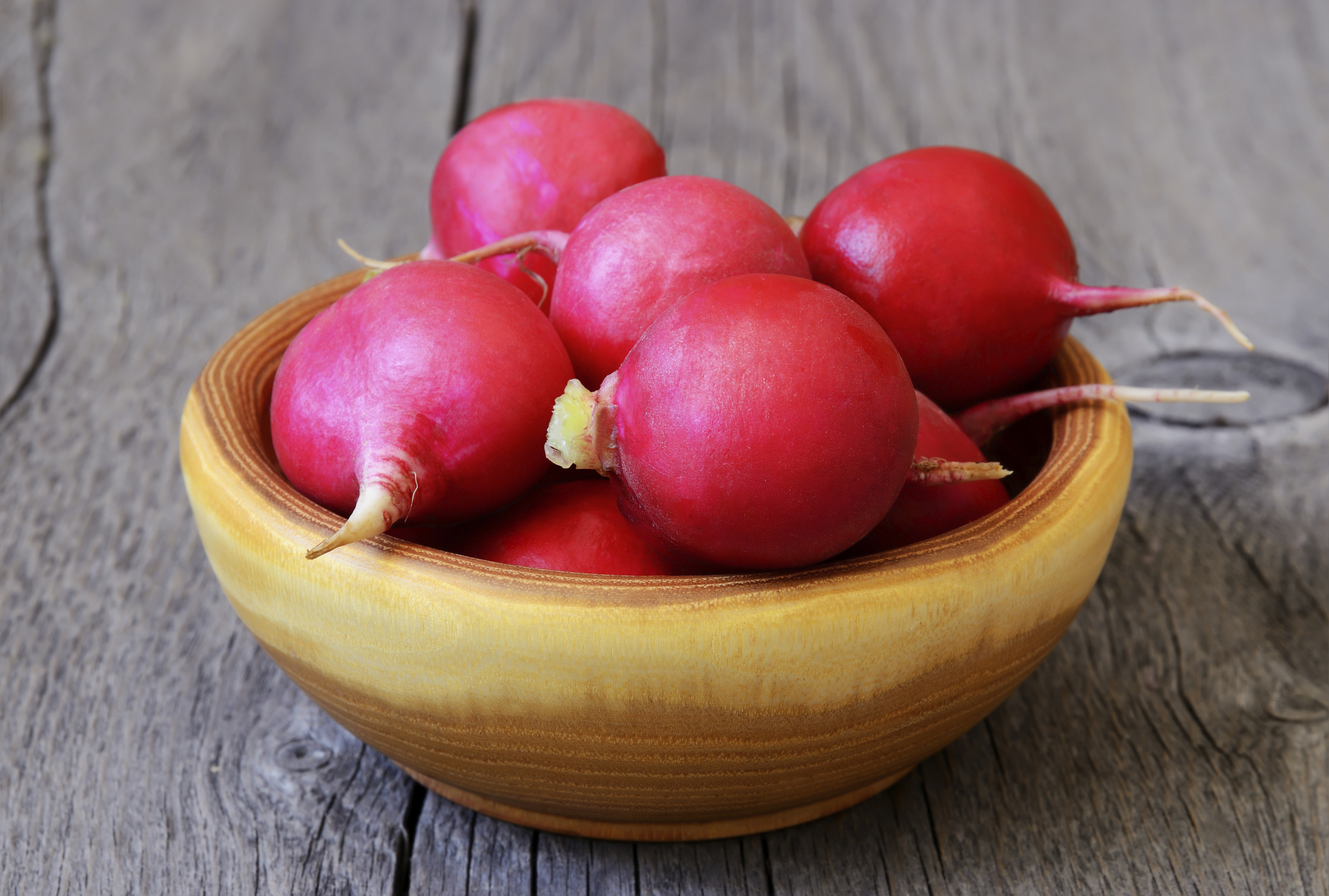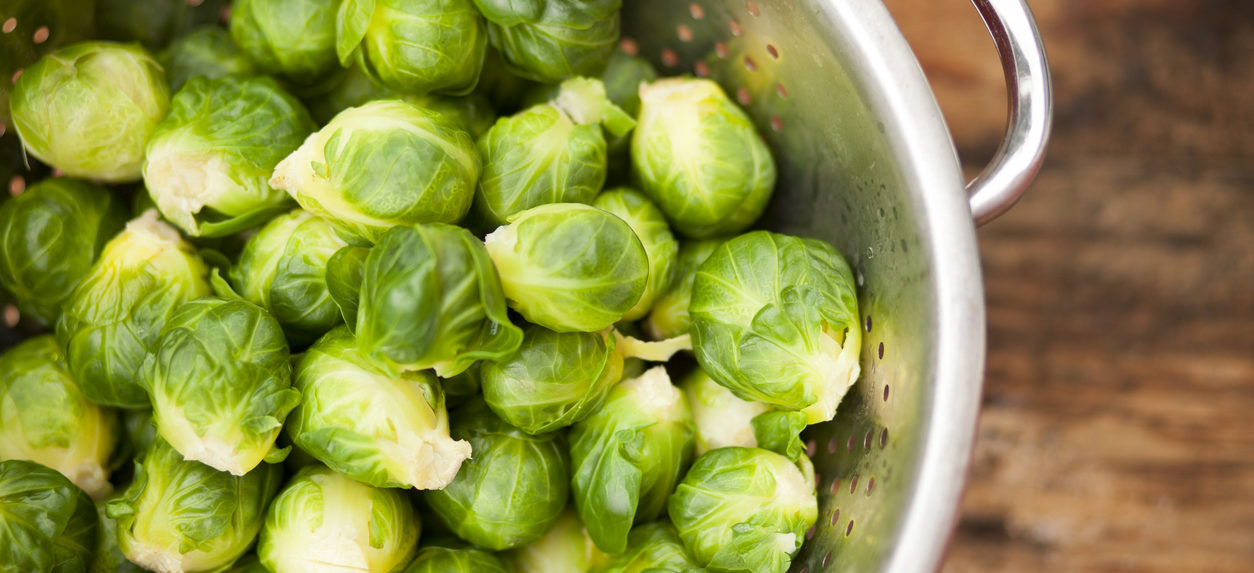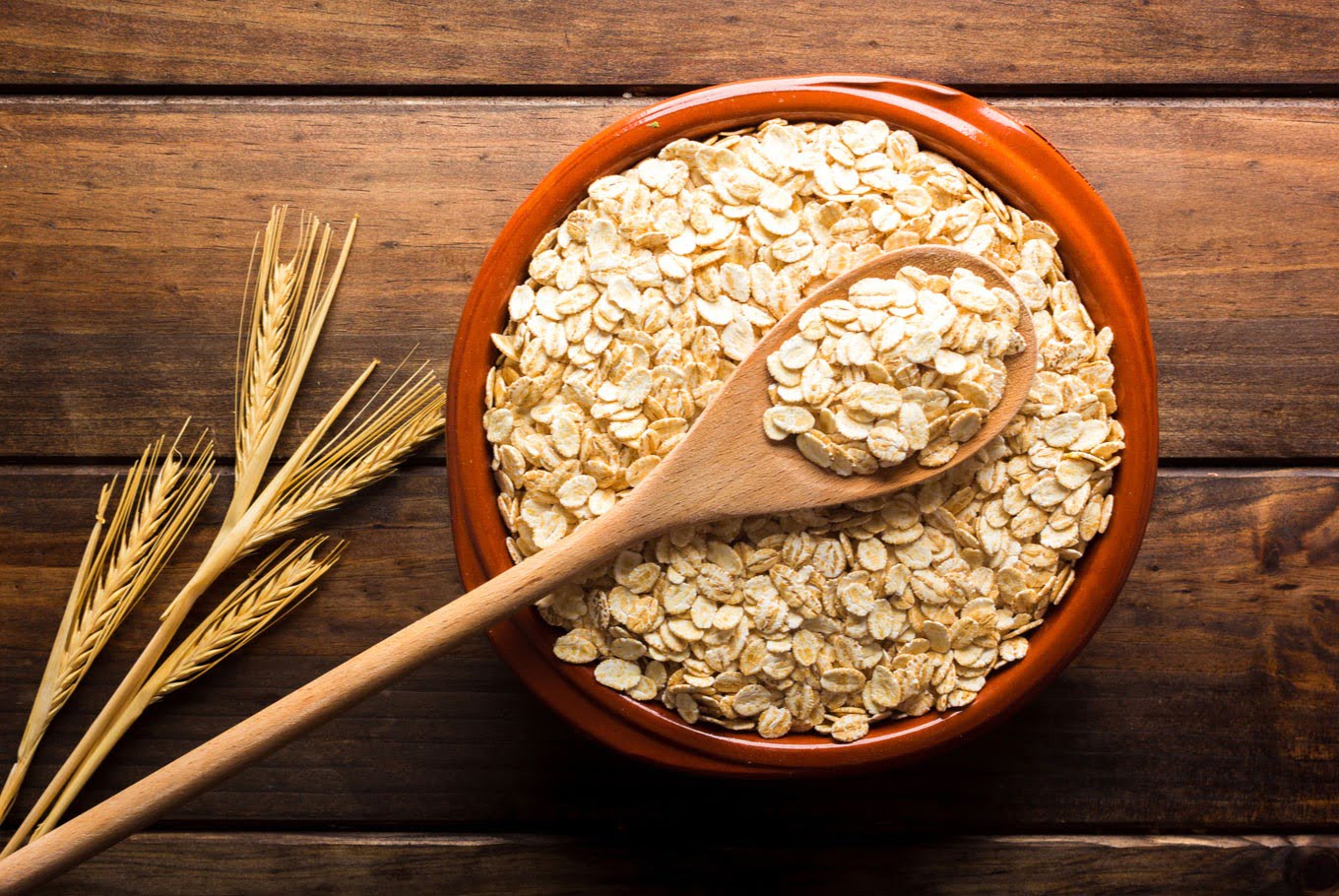Home>Gardening News and Trends>Latest News>What Vegetables Have Sugar


Latest News
What Vegetables Have Sugar
Modified: January 22, 2024
Discover the latest news on what vegetables have sugar and how they can affect your health. Stay informed and make informed dietary choices.
(Many of the links in this article redirect to a specific reviewed product. Your purchase of these products through affiliate links helps to generate commission for Chicagolandgardening.com, at no extra cost. Learn more)
Table of Contents
Introduction
Welcome to our comprehensive guide on sugar content in vegetables. When we think of sugar, we often associate it with sweet treats and sugary beverages. However, it may come as a surprise to learn that even vegetables contain varying amounts of natural sugars. As we strive to maintain a balanced and healthy diet, it is essential to understand the sugar content in the foods we consume, including vegetables.
In recent years, there has been increasing concern about the impact of added sugars on overall health and well-being. While added sugars in processed foods can contribute to weight gain and other health issues, the natural sugars found in vegetables provide valuable nutrients and should not be completely avoided. By understanding which vegetables have higher or lower sugar content, we can make informed choices and create meals that promote optimal health.
In this guide, we will explore the sugar content in various vegetables, categorizing them into three groups: low sugar content, moderate sugar content, and high sugar content. We will also discuss strategies for incorporating vegetables with sugar into a balanced diet. Please keep in mind that the sugar content mentioned refers to naturally occurring sugars and not added sugars.
It is important to note that while sugar content is a consideration for those with specific dietary needs, such as diabetes or weight management concerns, vegetables are an important part of a healthy diet for the majority of individuals. Rich in vitamins, minerals, and fiber, vegetables offer numerous health benefits and should not be overlooked.
Now, let’s delve into the world of vegetables and their sugar content, so you can make informed choices and enjoy a well-rounded, nutritious diet.
Understanding Sugar in Vegetables
Before we delve into specific vegetables and their sugar content, let’s take a moment to understand the role of sugar in vegetables. Sugar in vegetables comes in the form of natural sugars, also known as carbohydrates. These natural sugars provide the energy that plants need to grow and thrive.
When we consume vegetables, our bodies break down these natural sugars into glucose, which is used as fuel for our cells. However, the sugar content in vegetables varies, and it is important to be mindful of the amount we consume, especially if we have specific dietary concerns.
It’s essential to distinguish between natural sugars found in whole foods like vegetables and added sugars found in processed foods. Added sugars, such as those in sugary drinks or candies, are known to contribute to various health issues when consumed in excess. On the other hand, the natural sugars in vegetables are accompanied by essential nutrients, including vitamins, minerals, and fiber, making them beneficial additions to a balanced diet.
When evaluating the sugar content in vegetables, it’s important to consider the glycemic index (GI). The glycemic index measures how quickly a particular food raises blood sugar levels. Vegetables generally have a low GI, which means they have a minimal impact on blood sugar levels. This is due to their high fiber content, which helps slow down the absorption of sugars.
Another factor to consider is the overall nutrient composition of vegetables. Even if a vegetable has a moderate or high sugar content, it may also provide other important nutrients that contribute to overall health and well-being. Therefore, determining the nutritional value of a vegetable involves considering its sugar content in conjunction with its other beneficial components.
By understanding the role and impact of sugar in vegetables, we can make informed choices when it comes to incorporating them into our diets. Now, let’s explore specific vegetables and their sugar content, starting with those that have a low sugar content.
Vegetables with Low Sugar Content
When it comes to choosing vegetables with low sugar content, you have plenty of options to add to your plate. These vegetables generally contain minimal amounts of natural sugars, making them suitable for those who are watching their sugar intake or following a low-carb diet.
1. Leafy Greens: Leafy greens such as spinach, kale, and Swiss chard are excellent choices with low sugar content. They are not only low in sugars but also packed with essential vitamins, minerals, and antioxidants. These nutrient-dense vegetables make a great base for salads or can be cooked as side dishes.
2. Cruciferous Vegetables: Vegetables like broccoli, cauliflower, and Brussels sprouts are not only versatile but also have low sugar content. These vegetables are rich in fiber and provide a wide range of health benefits, including supporting a healthy digestive system and providing antioxidants that help fight inflammation.
3. Bell Peppers: Bell peppers, whether they are red, green, or yellow, are vibrant and flavorful vegetables with low sugar content. They are a rich source of vitamin C, antioxidants, and fiber, making them a nutritious addition to salads, stir-fries, or stuffed with a delicious filling.
4. Cucumbers: Cucumbers are not only refreshing but also low in sugar. They are mostly water, which makes them hydrating and perfect for hot summer days. Add slices of cucumber to your salads, use them as a base for refreshing cucumber salads, or enjoy them as a crunchy snack.
5. Asparagus: Asparagus is a nutrient-packed vegetable that is low in sugar. It is a good source of fiber, vitamins A, C, and K, as well as folate. Whether roasted, grilled, or sautéed, asparagus adds a delicious and nutritious element to any meal.
6. Zucchini: Zucchini is a versatile vegetable that is low in sugar and high in fiber. It can be spiralized into noodles, grilled, roasted, or added to soups and stews. Zucchini is also a great source of potassium and vitamin C.
These are just a few examples of vegetables with low sugar content. Including them in your meals will not only add delicious flavors and textures but also provide you with essential nutrients. Now that we’ve explored vegetables with low sugar content, let’s move on to those with moderate sugar content.
Vegetables with Moderate Sugar Content
While vegetables with low sugar content are often the go-to choice for those watching their sugar intake, there are also vegetables with moderate sugar content that can be enjoyed as part of a balanced diet. These vegetables provide additional flavor and sweetness while still offering numerous health benefits.
1. Carrots: Carrots are a root vegetable with a slightly sweet taste and a moderate sugar content. They are rich in antioxidants, vitamin A, and fiber, making them beneficial for eye health and supporting a healthy immune system. Enjoy carrots raw as a crunchy snack, roasted as a side dish, or incorporated into recipes such as carrot soup or stir-fries.
2. Beets: Beets have a naturally sweet taste due to their moderate sugar content. They are packed with antioxidants, fiber, and essential minerals like potassium and folate. Roast or steam beets to enhance their natural sweetness or add them to salads for a burst of vibrant color.
3. Sweet Potatoes: While sweet potatoes have a higher sugar content compared to other vegetables, they are still a nutritious addition to your diet. They are rich in fiber, vitamins A and C, and potassium. Enjoy baked sweet potato fries, mash them as a side dish, or incorporate them into various recipes for a naturally sweet flavor.
4. Corn: Corn is a starchy vegetable with moderate sugar content. It is a good source of dietary fiber, B vitamins, and antioxidants. While it does contain natural sugars, corn is still considered a nutritious vegetable when consumed in moderation. Enjoy grilled corn on the cob, incorporate corn kernels into salads or soups, or use cornmeal to make healthy homemade tortillas or cornbread.
5. Peas: Peas have a mild sweetness and contain a moderate amount of natural sugars. They are also rich in fiber, protein, and various vitamins and minerals. Whether eaten fresh, steamed, or added to dishes like stir-fries or pasta, peas add both flavor and nutrition to meals.
Remember, moderation is key when consuming vegetables with moderate sugar content. Pair them with other nutrient-dense foods and be mindful of portion sizes to maintain a well-balanced diet. Now that we have explored vegetables with moderate sugar content, let’s move on to those with high sugar content.
Vegetables with High Sugar Content
While most vegetables have relatively low to moderate sugar content, there are a few that fall into the category of high sugar content. It’s important to note that even though these vegetables contain more sugar, they still offer a range of nutrients and health benefits when consumed as part of a balanced diet.
1. Onions: Onions may come as a surprise on this list, as they are not typically associated with being high in sugar. However, they do contain a moderate amount of natural sugars compared to other vegetables. The sugar content in onions is released when cooked, enhancing their natural sweetness.
2. Beets: While beets were mentioned earlier with moderate sugar content, it’s worth noting that the sugar content in beets can vary depending on their size and variety. Some beet varieties, such as sugar beets, are cultivated specifically for their high sugar content, which is extracted and used to produce sugar.
3. Winter Squash: Varieties of winter squash, such as butternut squash and acorn squash, have a higher sugar content compared to other vegetables. However, they also provide essential vitamins, minerals, and dietary fiber. Enjoy roasted or baked winter squash as a comforting side dish or incorporate them into soups and stews for added sweetness.
4. Sweet Corn: Sweet corn, while already mentioned with moderate sugar content, deserves a spot in this category due to its sweeter taste compared to other vegetables. It contains more natural sugars, which contribute to its delicious flavor. Enjoy fresh sweet corn on the cob during the peak harvest season or incorporate kernels into various recipes for added sweetness.
5. Peppers: While bell peppers were previously mentioned with low sugar content, it’s worth noting that some pepper varieties, such as red or yellow bell peppers, have a slightly higher sugar content. However, they are still relatively low compared to other vegetables with higher sugar content.
Remember, when consuming vegetables with higher sugar content, it’s important to consider portion sizes and balance them with other nutrient-dense foods in your meals. Combining these vegetables with lean proteins, whole grains, and healthy fats can help create a well-rounded and balanced plate.
Now that we have explored vegetables with high sugar content, let’s move on to discussing how to incorporate vegetables with sugar into a balanced diet.
How to Incorporate Vegetables with Sugar into a Balanced Diet
When it comes to incorporating vegetables with sugar content into a balanced diet, the key is moderation and mindful meal planning. Here are some tips to help you make the most of these vegetables while maintaining a balanced and nutritious diet:
1. Pair with Protein and Healthy Fats: To slow down the absorption of sugars and promote satiety, combine vegetables with sources of protein and healthy fats. For example, pair roasted beets with grilled chicken breast and a sprinkle of feta cheese or serve a side of sautéed carrots with a portion of wild-caught salmon.
2. Focus on Variety: Include a diverse range of vegetables in your meals to ensure you’re getting a wide array of nutrients. By incorporating different vegetables with varying levels of sugar content, you’ll be able to enjoy a balanced plate while still enjoying some natural sweetness.
3. Control Portion Sizes: Be mindful of the portion sizes when it comes to vegetables with higher sugar content. While they offer nutritional benefits, it’s important to be aware of the amount of sugar you’re consuming. Incorporate these vegetables into your meals, but balance them with vegetables that have lower sugar content.
4. Cook with Healthy Preparation Methods: Opt for healthy cooking methods such as steaming, grilling, or roasting instead of frying or deep-frying. These methods retain more nutrients and natural flavors, allowing you to enjoy the inherent sweetness of the vegetables without any added sugars.
5. Consider Timing: If you’re concerned about the impact of sugars on your blood sugar levels, consider consuming vegetables with higher sugar content earlier in the day. This allows your body more time to metabolize the sugars and utilize them as energy throughout the day.
6. Mindful Snacking: If you enjoy snacking on vegetables, choose options with lower sugar content, such as cucumber slices or celery sticks. Pair them with a source of protein like hummus or Greek yogurt dip for a satisfying and balanced snack.
Remember, the key is to create a well-rounded and balanced plate by incorporating a variety of vegetables, including those with different sugar content. By combining them with other nutrient-dense foods and practicing portion control, you can enjoy the natural sweetness of these vegetables while still maintaining a healthy diet.
Now that we’ve discussed how to incorporate vegetables with sugar into a balanced diet, let’s wrap up this comprehensive guide.
Conclusion
Understanding the sugar content in vegetables is crucial for maintaining a balanced and nutritious diet. While vegetables do contain natural sugars, they offer a wide range of essential nutrients, vitamins, minerals, and dietary fiber that contribute to overall health and well-being. By being mindful of the sugar content in different vegetables, we can make informed choices and create meals that promote optimal health.
In this guide, we explored the sugar content in vegetables and categorized them into three groups: low sugar content, moderate sugar content, and high sugar content. Vegetables with low sugar content, such as leafy greens and cruciferous vegetables, provide valuable nutrients without adding excessive sugar to our diets. Those with moderate sugar content, like carrots and sweet potatoes, offer a balance between sweetness and nutritional benefits. And while some vegetables, such as onions and certain squash varieties, have higher sugar content, they can still be enjoyed in moderation as part of a well-rounded meal plan.
When incorporating vegetables with sugar into a balanced diet, it’s important to pair them with sources of protein and healthy fats, focus on variety, control portion sizes, use healthy cooking methods, consider timing, and mindfully snack. By following these strategies, we can enjoy the natural sweetness of these vegetables while maintaining a healthy balance.
Remember, individual dietary needs and preferences may vary, so it’s important to consult with a healthcare professional or nutritionist for personalized guidance. They can help tailor a meal plan that suits your specific requirements and goals.
So, next time you’re planning your meals and reaching for vegetables, consider the sugar content and the overall nutritional value they bring to your plate. With a mindful approach, you can make delicious and nutritious choices that support your well-being and foster a love for vegetables.










